Needle Diseases
Lophodermium pinastri on pines
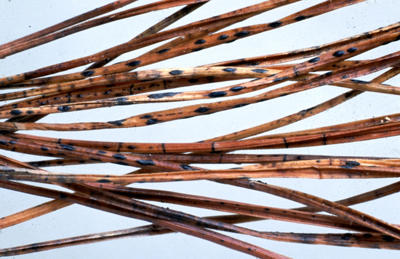
Hysterothecia (also refered to as apothecia covered by stroma) on pine needles infected by Lophodermium.
Another view of needles with lots of hysterothecia of Lophodermium.
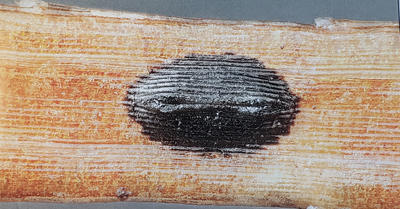
Higher magnification of the football-shaped hysteriothecia. When mature the slit in the middle opens releasing ascospores.
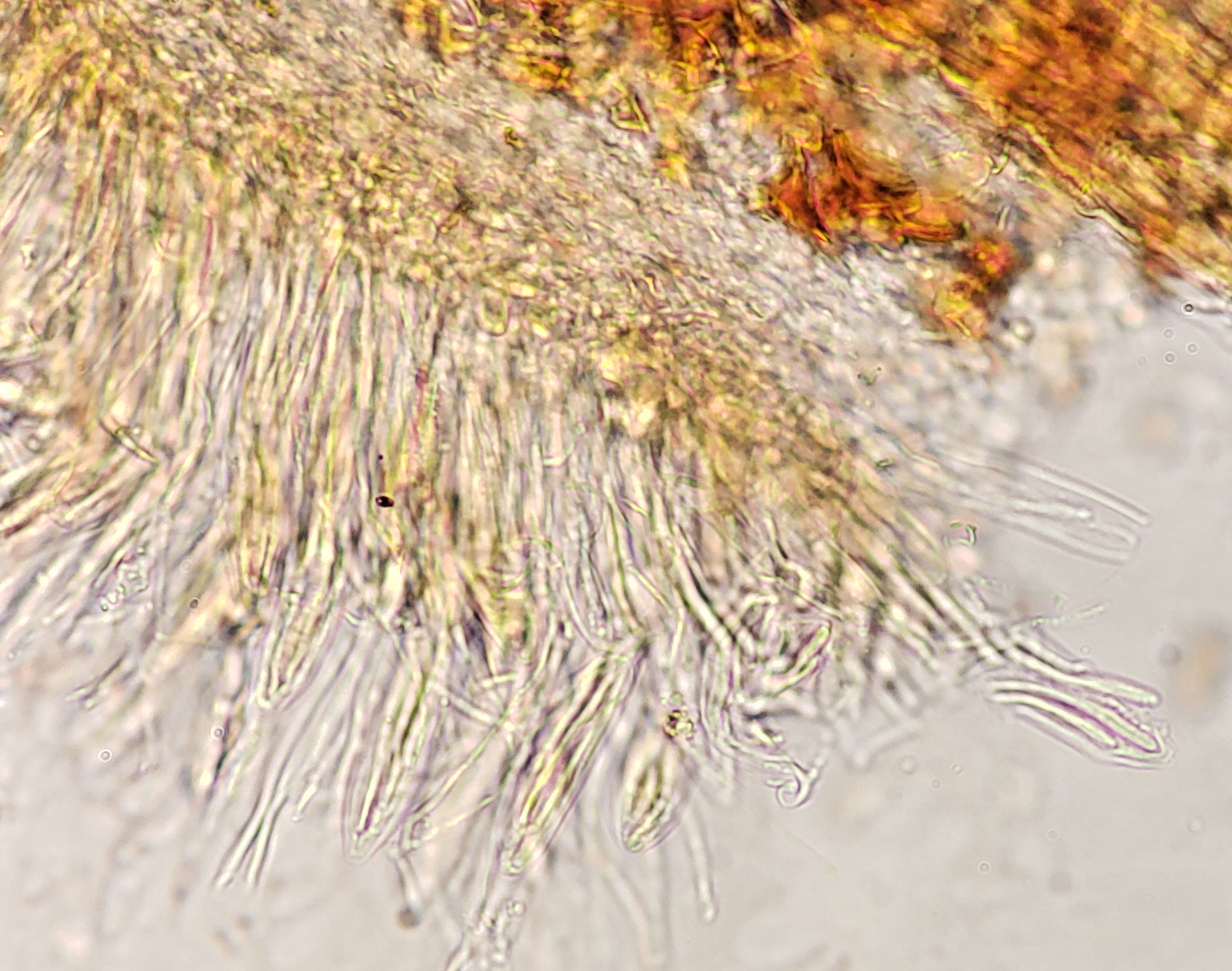
Section through the hysterothecium showing asci and long thread-like ascospores
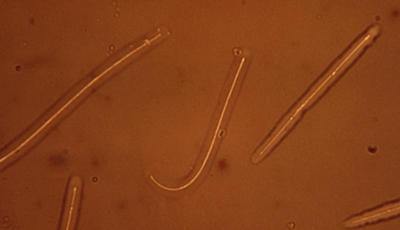
When mature and released from the hysterothecia, the long thin ascospores have a sticky sheath that helps them adhere to needles.
Hypodermella pini- on fir
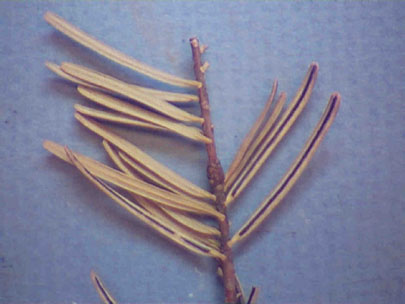
Large hysterothecia, occupying almost the entire length of the needle, are present on a few of these needles.
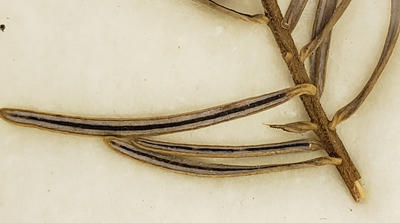
Another view of the long black hysteriothecia that is formed by Hypodermella on fir needles.
Elytroderma deformans - on western species of pine
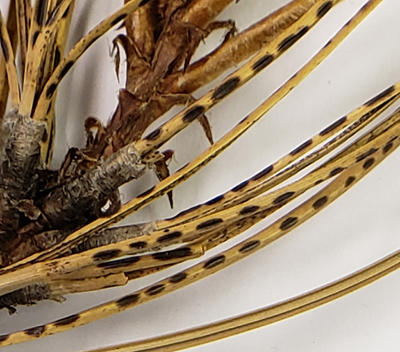
Black hysteriothecia produced by Elytroderma on needles of Ponderosa pine.